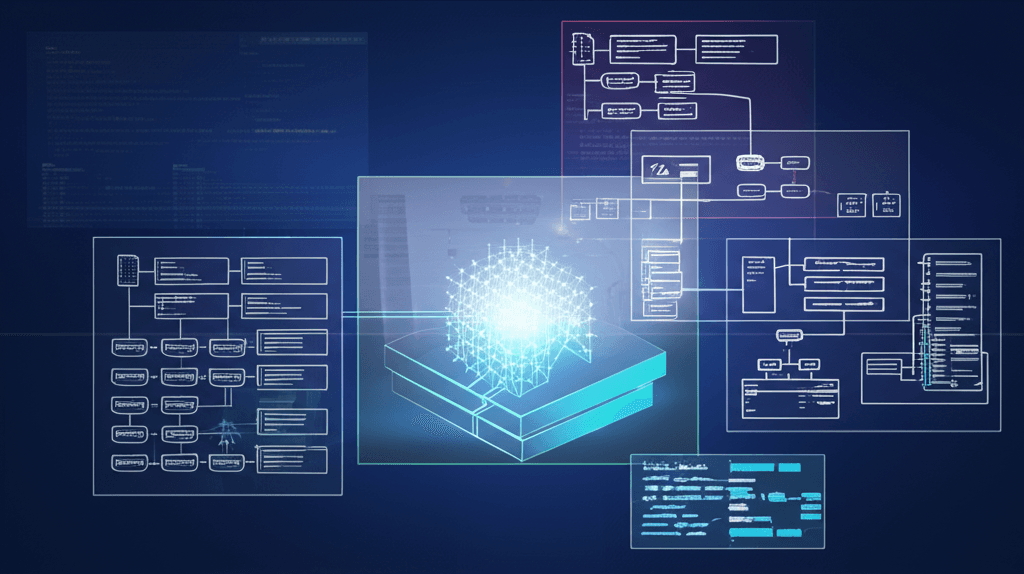Amazon Kiro redefines AI coding, prioritizing structured planning for production.
Amazon's Kiro transforms AI coding from "vibe" to "spec-driven," building disciplined, enterprise-ready software from the ground up.
July 27, 2025

Amazon has entered the burgeoning field of AI-powered software development with Kiro, an integrated development environment (IDE) designed to impose structure on a process that has become increasingly improvisational.[1][2] Launched in preview by Amazon Web Services (AWS), Kiro aims to bridge the gap between rapidly generated AI prototypes and the robust, well-documented code required for production-ready software.[1][3] The tool introduces a "spec-driven development" philosophy, a stark contrast to the "vibe coding" approach encouraged by many existing AI assistants that prioritize speed over formal planning.[1][4] This strategic move positions Amazon in direct competition with established players like Microsoft's GitHub Copilot and Google's Gemini Code Assist, signaling a broader industry push towards more autonomous and sophisticated AI development tools.[1]
At the heart of Kiro is its novel approach to software creation, which begins not with writing code, but with defining clear specifications.[5][4] When a developer provides a high-level prompt, Kiro's AI agents, powered by models from the Amazon-backed startup Anthropic, don't immediately generate code.[3][6] Instead, they produce a suite of planning documents, including requirement lists, technical design diagrams with data flows and schemas, and a detailed to-do list of implementation tasks.[5][7] This "requirement-first" methodology forces a deliberate planning phase, aiming to eliminate the ambiguity and potential for messy, difficult-to-maintain code that can result from unstructured, prompt-based coding.[5] By generating these foundational artifacts upfront, Kiro seeks to ensure that both human developers and the AI agents are aligned on the project's architecture and goals before implementation begins, a process intended to lead to cleaner, more scalable, and better-documented software.[8][5]
Beyond its emphasis on planning, Kiro integrates intelligent automation directly into the development workflow through features called "hooks" and "steering."[2] Agent hooks are event-driven automations that can be configured to handle repetitive but crucial tasks that occur in the background.[7][9] For instance, a hook can be set up to automatically update documentation, generate or run unit tests, or scan for security vulnerabilities whenever a file is saved or modified.[10][9] This feature acts like an experienced developer looking over a colleague's shoulder, catching potential issues and ensuring consistency without manual intervention.[3] Steering files, on the other hand, allow developers to guide the behavior of Kiro's AI agents by providing project-specific context, coding standards, and preferred workflows, ensuring the AI's contributions align with the project's established patterns.[2] Kiro also supports the Model Context Protocol (MCP), enabling it to integrate with external tools and data sources, further extending its capabilities.[3][10]
Built on Code OSS, the open-source foundation of the popular Visual Studio Code, Kiro offers a familiar interface for many developers, allowing them to retain their settings and compatible plugins.[4][8] This familiar footing is crucial as it lowers the barrier to adoption in a competitive market that includes other VS Code-based AI tools like Cursor.[11][12] While Cursor has gained popularity for its flexibility and support for multiple large language models, Kiro differentiates itself with its focus on structured, enterprise-grade development.[12][13] Kiro's philosophy is less about providing a conversational coding partner for rapid prototyping and more about creating a comprehensive engineering assistant that enforces disciplined planning and produces production-ready systems.[12][13] This distinction highlights a growing divergence in the AI IDE landscape, with some tools catering to individual developer productivity and others, like Kiro, targeting the complexities of team-based, long-term software projects.[13] Although currently free during its public preview, Amazon has outlined a future pricing structure with tiered subscription plans based on usage.[9][7]
In conclusion, the launch of Kiro represents a significant evolution in the AI-assisted coding landscape. By prioritizing detailed planning and automated quality assurance, Amazon is betting that the future of software development lies not just in accelerating code generation, but in instilling engineering discipline into the AI-driven workflow. The tool's "spec-driven" approach directly confronts the challenges of undocumented and difficult-to-maintain AI-generated code, a growing concern for businesses.[1] Kiro's success will ultimately depend on whether developers embrace this more structured, methodical approach to AI collaboration.[10] If it succeeds, Kiro could not only streamline the path from prototype to production but also set a new standard for how developers and AI work together to build complex, reliable, and maintainable software systems.[8]
Sources
[1]
[2]
[3]
[4]
[6]
[7]
[8]
[9]
[10]
[12]
[13]